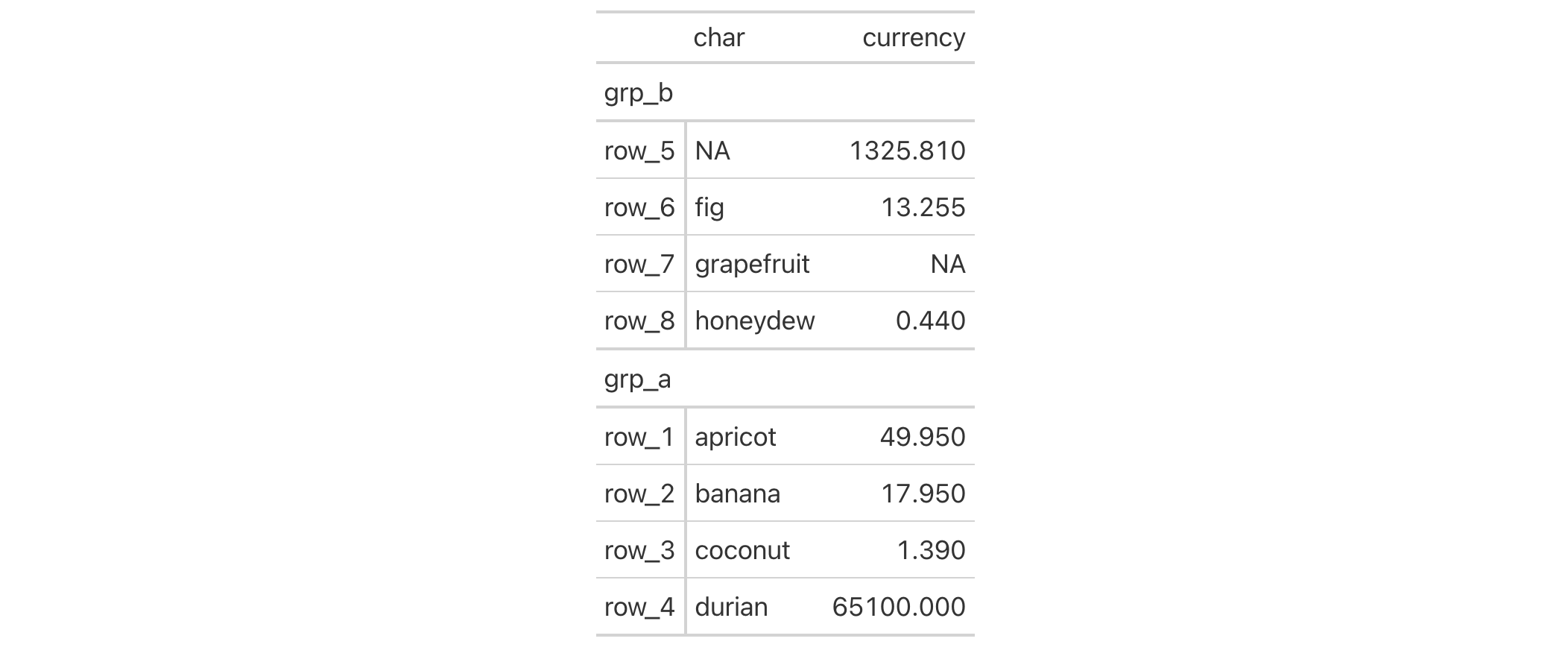We can modify the display order of any row groups in a gt object with
row_group_order(). The groups argument takes a vector of row group ID
values. After this function is invoked, the row groups will adhere to this
revised ordering. It isn't necessary to provide all row ID values in
groups, rather, what is provided will assume the specified ordering at the
top of the table and the remaining row groups will follow in their original
ordering.
Arguments
- data
The gt table data object
obj:<gt_tbl>// requiredThis is the gt table object that is commonly created through use of the
gt()function.- groups
Specification of row group IDs
vector<character>// requiredA character vector of row group ID values corresponding to the revised ordering. While this vector must contain valid group ID values, it is not required to have all of the row group IDs within it; any omitted values will be added to the end while preserving the original ordering.
Examples
Let's use exibble to create a gt table with a stub and with row
groups. We can modify the order of the row groups with row_group_order(),
specifying the new ordering in groups.
exibble |>
dplyr::select(char, currency, row, group) |>
gt(
rowname_col = "row",
groupname_col = "group"
) |>
row_group_order(groups = c("grp_b", "grp_a"))
See also
Other row addition/modification functions:
grand_summary_rows(),
rows_add(),
summary_columns(),
summary_rows()